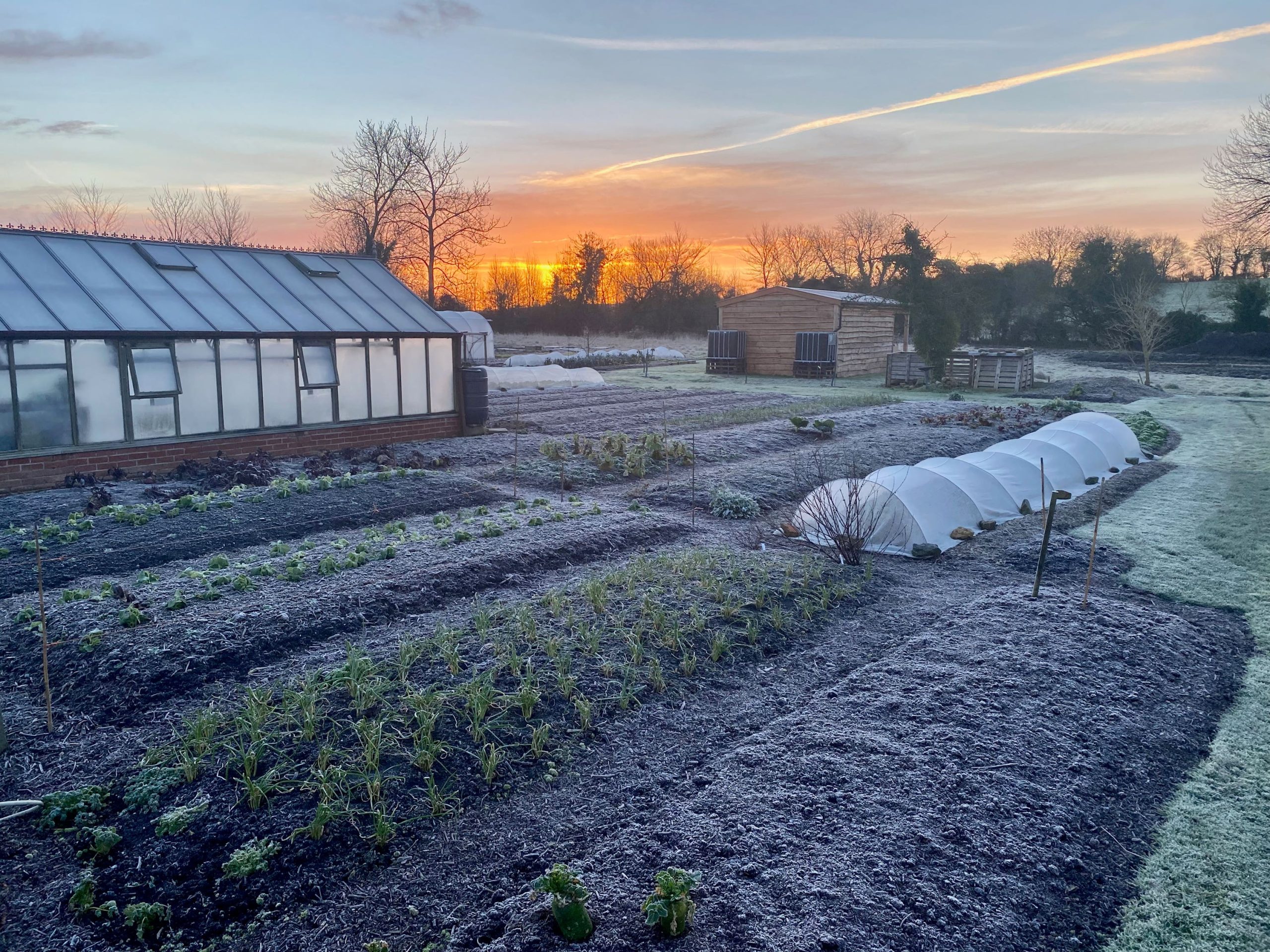Your winter allotment plan 2022: what to grow now on your vegetable patch
An expert offers a guide to allotment care as temperatures drop
Christmas may be nearing, but don’t think you can sit tight just because the nights have drawn in – there’s plenty you could be doing on the allotment or vegetable patch now to give yourself a head start for next year.
Gardening expert, author and YouTuber Charles Dowding, whose new book No Dig was recently published, urges people to use the winter to give soil a boost and make plots ready for planting.
He offers the following tips:
Lose the weeds
View this post on Instagram
“Get the weeds to zero. If you have a mass of weeds on your allotment which are going to be too much effort to hand-weed, lay cardboard on top, with a little bit of compost on top of that, which should get you weed-free very quickly.”
The cardboard will soon get wet, so it will start to degrade very quickly, and you’ll have to keep on top of pernicious perennial weeds like couch grass and ground elder.
“You’ll have annual meadow grass, bittercress and groundsel but keep weeding and clear the debris to the compost heap.”
Leave the roots of finished crops
“Don’t try to heave all the roots (of spent crops) out. Just cut them off at ground level, taking out enough of the top that they can’t regrow. Then you can spread a bit of compost over the surface and you’re ready for the following year. The roots will be eaten by microbes.”
Lift some remaining veg
View this post on Instagram
While some vegetables like parsnips can remain in the ground over winter, Dowding recommends lifting carrots before they start being eaten by slugs. They also are unlikely to grow much more.
“I find that carrots store better in a cool, dry shed. Then you can rake the soil surface and spread some compost on it. Turnips could also be lifted as they do get frosted.
“Celeriac can also get a leaf disease which will make it start to rot, so I reckon to get celeriac out by the middle of December and the same with beetroot.
“You only need one really freezing night and beetroot can go soft. Just leave them in a box in the shed. Potatoes are also frost-tender so the last of them should be lifted by December”, he recommends.
Tend to fruits
View this post on Instagram
Autumn-fruiting raspberry canes can be cut down to ground level between December and March. Spread woody compost or woodchip over the area, as they don’t necessarily like the soil to be really rich and fertile, he advises.
Don’t dig
“The only bit of digging I’d recommend is if you’ve got any woody plants or brambles or large docks on your allotment, the sort of plants which would come through a mulch. Dig them out.”
Copy nature to give soil a boost
View this post on Instagram
Once your allotment is cleared, copy nature.
“At this time of year, organic matter is falling from trees and dead plants on to the ground. Gather it up and apply all this new fertility to the surface (of the vegetable patch). Never dig it in because leaving it on top encourages worms and other soil life to come up and find it and take it down.
“The best feed for soil life is compost. It can be any type – not necessarily bags from the garden centre. It could be old animal manure, your own leaf mould, or old woodchip.
“Become a scavenger. If there’s a micro brewery near you, they might have organic matter such as spent hops, which are great for the compost heap, or see if cafes have any spent coffee grounds you could use.”
Plant garlic
View this post on Instagram
While December is a pretty fallow month for new plantings, you can plant garlic, Dowding suggests.
“We just pop garlic in quite close to the surface and put compost on top and you’d be surprised how it roots down.”
Broad beans can also be planted, but are better if you’ve sown them in November and plant them out as transplants, he suggests. “But if it’s a mild December, you can still sow broad beans.”
Take care of overwintering crops

Protect cauliflowers in winter
Spring onions, spring cabbage and spring cauliflowers, sown at the end of August and then transplanted by the end of September, should be established before winter, he advises.
“Provide protection, particularly with brassicas which can be attacked by pigeons. We keep a mesh cover on hoops secured by stones over cabbage and cauliflowers during winter. It keeps the wind off and the insects at bay and it’s like a mini-greenhouse – but not hot.”
Sow indoors
View this post on Instagram
You can sow peas in December for pea shoots, which is also good fun for kids, he advises.
“Germinate them in the house, but they will need good light to grow on. With pea shoots, you pick the tips but they will regrow from the base. Try to keep them going through the winter.”
Plan your year

Good planning will help you get ahead
“Write some ideas down – what you want to eat, then have a play on a piece of paper to work out how much of a bed you might plant up with it. Most people like potatoes and you can slot early potatoes in anywhere because they finish by the middle of June, so you’ve still got time to plant courgettes and things like that.
“Consider what you could sow early in the spring which will come early and finish early, then you can have another bite of the cherry.
“Maybe make two plans – one of what you are going to plant in the spring and the other of what you’ll plant in the summer.”
Order seeds
Order your veg seeds early to avoid disappointment, he advises.
The Press Association
Latest posts by The Press Association (see all)
- President and political leaders hail McIlroy’s thrilling Masters victory - April 14, 2025
- Upstairs, Downstairs actress and co-creator Jean Marsh dies aged 90 - April 13, 2025
- How to make a simnel cake for Easter - April 13, 2025
- Best places to see bluebells this spring - April 11, 2025
- Jayne Torvill says farewell tour with Christopher Dean will be ‘quite emotional’ - April 11, 2025




















